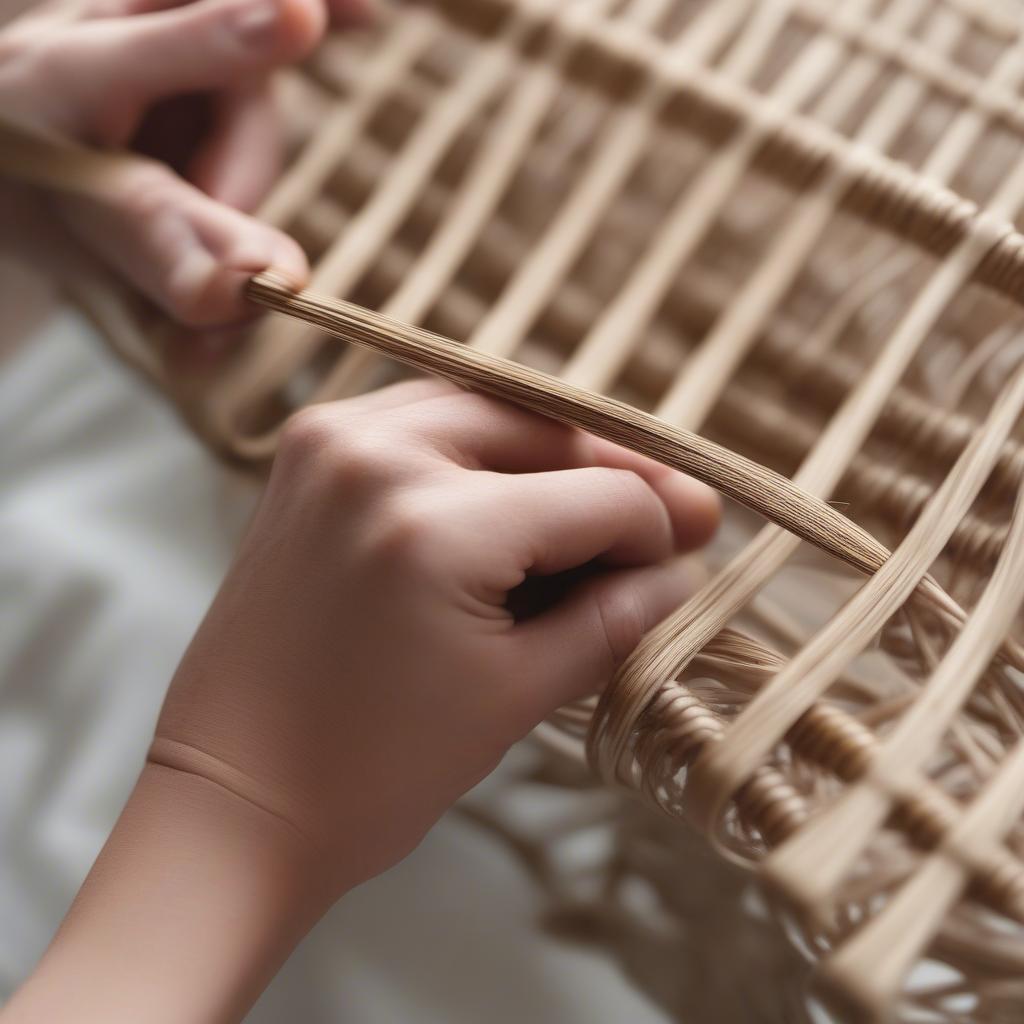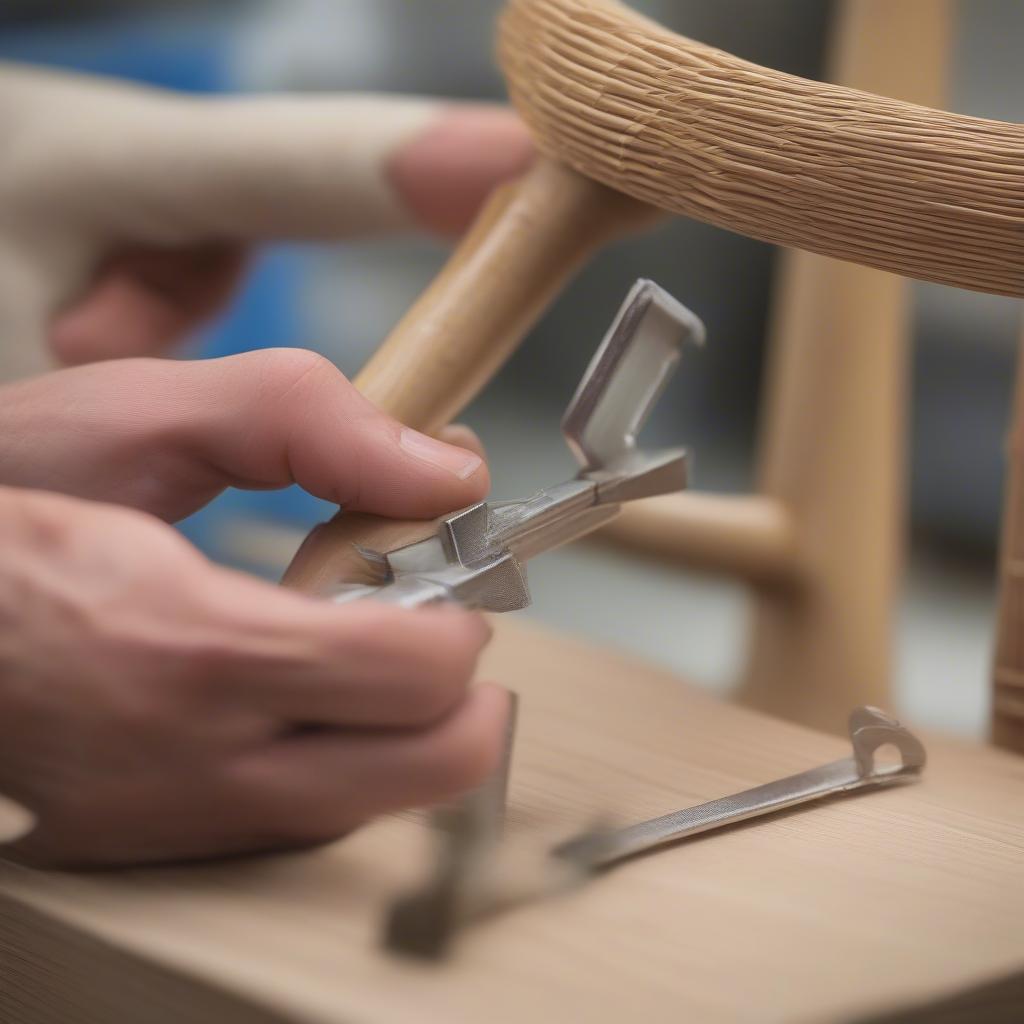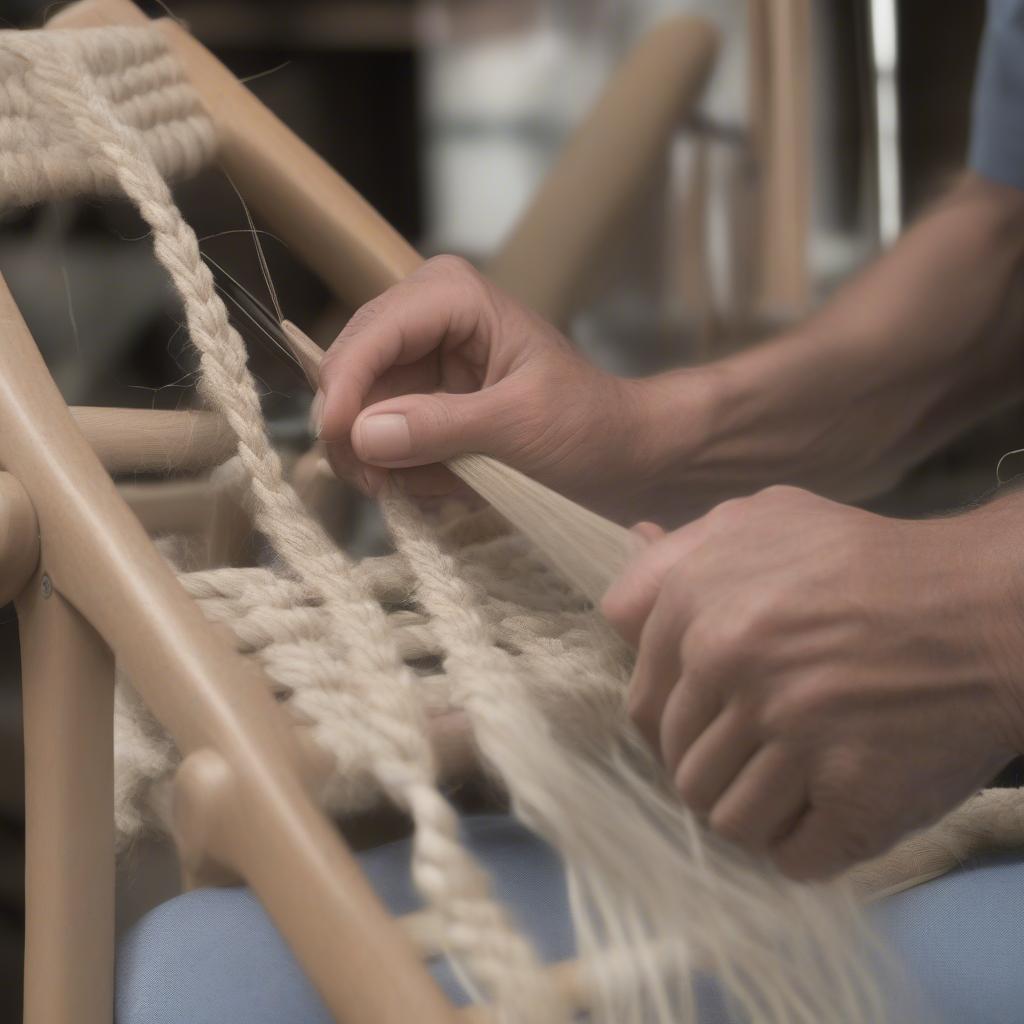Weave Chair
How to Repair a Basket Weave Chair
Knowing How To Repair A Basket Weave Chair can save you money and preserve a cherished piece of furniture. Whether it’s a broken strand, a loose joint, or a sagging seat, this guide will walk you through the process of restoring your woven chair to its former glory.
Identifying the Damage on Your Basket Weave Chair
Before you begin any repairs, it’s crucial to assess the extent of the damage. Is the problem structural, affecting the frame or legs? Or is it cosmetic, involving the woven material itself? Pinpointing the specific issue will help you determine the right approach and gather the necessary materials. Common problems include broken or frayed weaving material, loose joints, and a sagging seat. Once you’ve identified the damage, you can move on to the next step. Check chair cane weaving prices to get an idea of professional repair costs if you’re unsure about tackling the job yourself.
 Repairing a Broken Weave in a Chair
Repairing a Broken Weave in a Chair
Gathering Your Repair Materials
Having the right tools and materials on hand will make the repair process much smoother. Depending on the type of damage and the material of your chair (wicker, rattan, etc.), you’ll need specific supplies. These may include replacement weaving material (raatan for chair seat weaving is a popular choice), strong glue suitable for the material, a sharp knife or scissors, a weaving needle or awl, and possibly a small mallet. You might also consider lawn chair weaving material for outdoor furniture.
Repairing a Broken Strand
If you have a broken strand, you can often weave in a new piece. Start by carefully removing the broken piece. Measure and cut a new strand of the same material, ensuring it’s slightly longer than the gap. Using a weaving needle or awl, weave the new strand in, following the existing pattern. Secure the ends by tucking them under existing strands or using glue. You can explore chair weaving patterns for guidance.
Securing Loose Joints
Loose joints are a common problem in woven chairs. Identify the loose joint and carefully clean the area to remove any old glue or debris. Apply a strong adhesive appropriate for the material. Clamp the joint firmly in place and allow the glue to dry completely according to the manufacturer’s instructions. Reinforcing the joint with a small nail or screw may be necessary for added stability.
 Securing Loose Chair Joints with Glue and Clamps
Securing Loose Chair Joints with Glue and Clamps
Addressing a Sagging Seat
A sagging seat often indicates stretched or weakened weaving material. One solution is to tighten the existing weave by carefully pulling and adjusting the strands, working from the outside in. If the material is too damaged, replacing the entire woven seat might be necessary.
Weaving a New Seat
Weaving a new seat can be a challenging but rewarding task. You’ll need to remove the old weaving and measure the seat frame. Choose a suitable weaving rope for chair and begin weaving, following a chosen pattern. This process requires patience and attention to detail.
 Weaving a New Chair Seat with Rope
Weaving a New Chair Seat with Rope
Conclusion
Repairing a basket weave chair requires patience and attention to detail, but it’s a worthwhile endeavor. By following these steps, you can restore your cherished chair to its former beauty and extend its lifespan. How to repair a basket weave chair is now within your grasp!
FAQ
- What type of glue is best for repairing wicker furniture?
- Can I paint a wicker chair after repairing it?
- How do I prevent my woven chair from sagging again?
- What is the best material for replacing a broken cane seat?
- Where can I find replacement weaving materials for my chair?
- How do I clean a wicker chair?
- What are the common signs of wear and tear in a wicker chair?
Need help? Contact our 24/7 customer support hotline at +84 388 951 999, visit our office in Hanoi, Vietnam or at Tech Avenue, Suite 12, San Francisco, CA 94105, USA.
